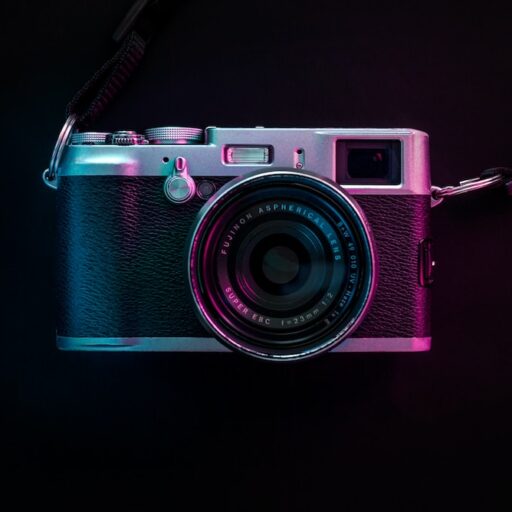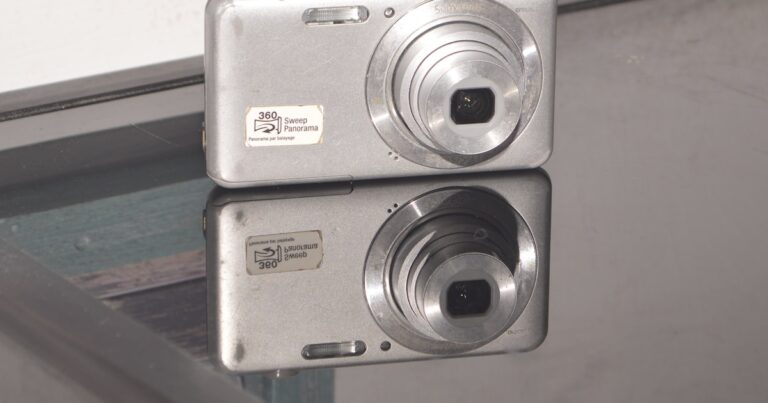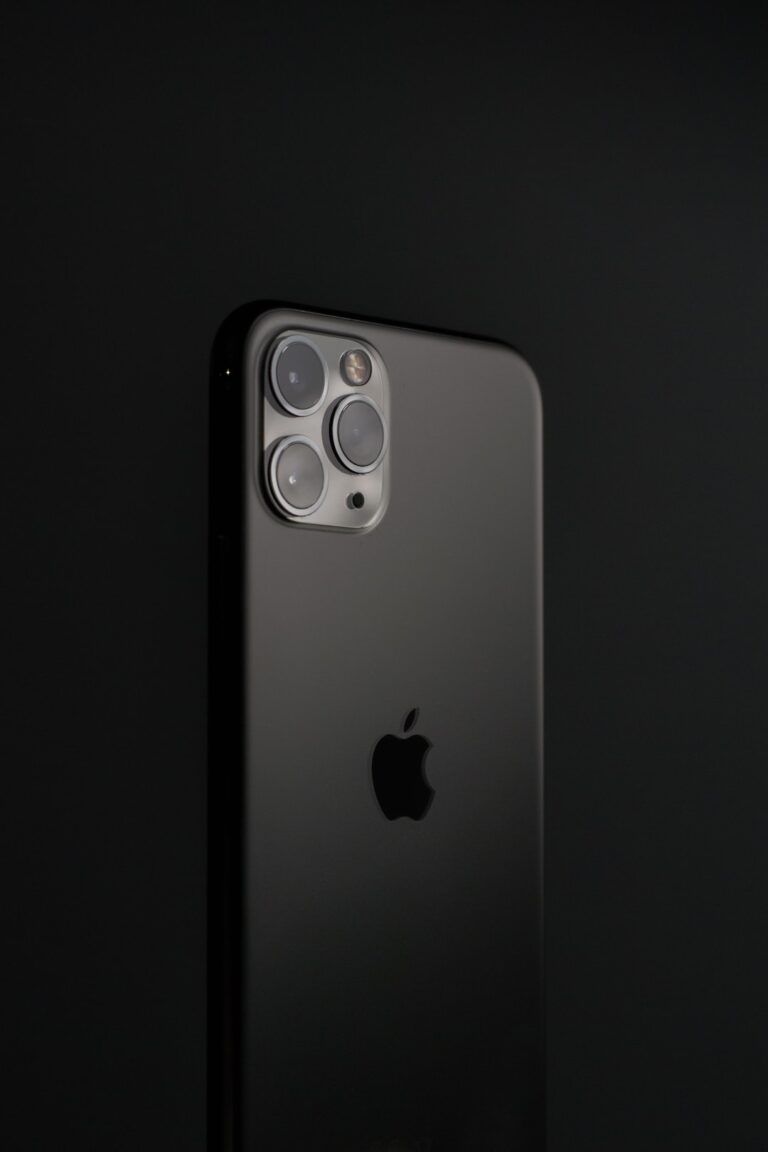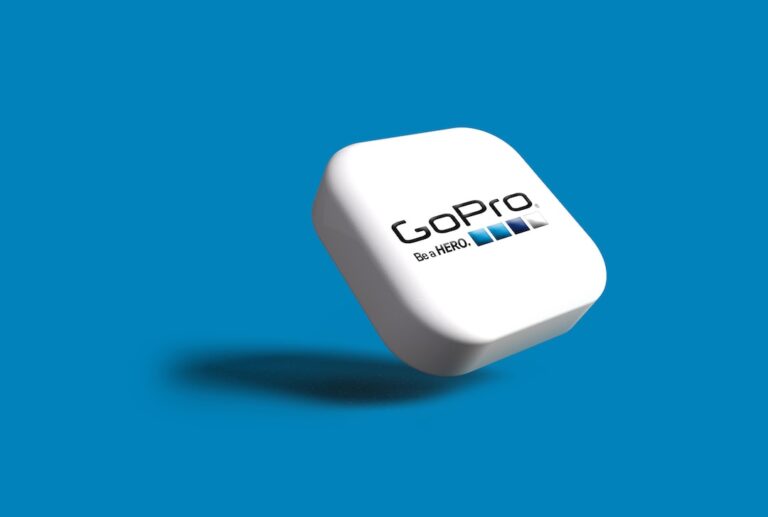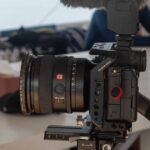Support our educational content for free when you purchase through links on our site. Learn more
Is Canon Better or Sony? The Ultimate 10-Point Showdown (2025) 📸

Choosing between Canon and Sony feels like picking your favorite superhero — both have superpowers, but which one truly saves the day for your photography? Whether you’re chasing wildlife in the wild, capturing intimate wedding moments, or crafting cinematic videos, this age-old debate keeps photographers and videographers buzzing. Did you know that Sony’s Real-time Eye AF can track a moving subject’s eye with uncanny precision, even in near darkness? Meanwhile, Canon’s RF 28-70mm f/2.0 lens has become legendary for delivering razor-sharp images with buttery smooth bokeh, all in one versatile zoom. Intrigued yet?
In this comprehensive guide, we at Camera Brands™ dissect every angle — from sensor tech and autofocus wizardry to lens ecosystems and battery life — to help you decide: Is Canon better or Sony? Spoiler alert: both brands pack serious punch, but your perfect match depends on your style, needs, and workflow. Ready to find out which camera system will elevate your craft in 2025? Let’s dive in!
Key Takeaways
- Canon excels in color science, ergonomics, and a growing RF lens lineup — ideal for photographers who crave classic handling and stunning image quality.
- Sony leads with cutting-edge autofocus, superior battery life, and compact mirrorless bodies — perfect for fast-paced shooting and travel.
- Both brands offer professional-grade video capabilities, but Canon’s 8K and smooth Dual Pixel AF contrast with Sony’s excellent low-light performance and advanced video profiles.
- The lens ecosystem matters: Sony boasts a vast native and third-party lens selection, while Canon’s RF lenses are rapidly expanding with premium optics.
- Your choice boils down to personal shooting style, lens preferences, and ergonomics — no one-size-fits-all winner here!
Ready to explore the latest Canon and Sony gear?
- Shop Canon Cameras: Amazon | B&H | Canon Official
- Shop Sony Cameras: Amazon | B&H | Sony Official
Table of Contents
- Quick Tips and Facts About Canon vs Sony 📸
- The Evolution of Canon and Sony: A Tale of Two Giants 🎞️
- 1. Canon vs Sony Mirrorless Cameras: Which Reigns Supreme? ⚔️
- 2. DSLR vs Mirrorless: Canon and Sony’s Battle for Innovation 🔄
- 3. Sensor Technology Showdown: Canon’s Dual Pixel vs Sony’s Exmor Sensors 🥊
- 4. Autofocus Performance: Eye AF, Tracking, and Speed Comparison 👁️🗨️
- 5. Lens Ecosystem & Compatibility: Which Brand Offers More Flexibility? 🔍
- 6. Video Capabilities: Canon vs Sony for Filmmakers and Content Creators 🎥
- 7. User Experience and Interface: Navigating Menus and Ergonomics 🖱️
- 8. Battery Life and Portability: How Do Canon and Sony Stack Up? 🔋
- 9. Price vs Performance: Getting the Best Bang for Your Buck 💸
- 10. Real-World User Feedback: What Photographers and Videographers Say 🗣️
- My Personal Photography Journey: From Canon to Sony and Back Again 📷
- Breaking Down My Thought Process: Choosing Between Canon and Sony 🤔
- My Current Camera Setup: Why I’m Rocking the Canon R5 Mark II with 28-70mm f/2.0 🔥
- Tips for Switching Between Canon and Sony Systems Without Losing Your Mind 🧠
- Future Trends: What’s Next for Canon and Sony in 2024 and Beyond? 🚀
- Conclusion: Which Brand Should You Choose? Our Final Verdict 🏆
- Recommended Links for Canon and Sony Enthusiasts 🔗
- FAQ: Your Burning Questions About Canon vs Sony Answered ❓
- Reference Links and Resources for Deeper Dives 📚
Quick Tips and Facts About Canon vs Sony 📸
Welcome to the ultimate showdown between two camera titans: Canon and Sony! Whether you’re a seasoned pro or a curious beginner, here are some quick, no-nonsense facts to get you started:
| Feature | Canon | Sony |
|---|---|---|
| Sensor Tech | Dual Pixel CMOS AF | Exmor R/RS CMOS |
| Autofocus | Smooth, reliable Dual Pixel AF | Fast Real-time Eye & Animal AF |
| Lens Ecosystem | Extensive RF & EF mounts | Vast E-mount + third-party |
| Video Capabilities | 4K/8K, Canon Log profiles | 4K/6K, S-Log, HLG profiles |
| Build & Ergonomics | Robust, ergonomic design | Compact, customizable |
| Battery Life | Generally longer, esp. DSLRs | Improved in recent mirrorless |
| Price Range | Broad, from entry to pro | Competitive, tech-forward |
| User Interface | Intuitive, beginner-friendly | Advanced, customizable |
✅ Canon shines with its user-friendly interface, legendary color science, and a lens lineup that’s a dream for many photographers.
✅ Sony dazzles with cutting-edge sensor tech, lightning-fast autofocus, and a mirrorless system that’s lightweight and packed with features.
But hey, this is just the appetizer! Stick with us as we dive deep into every nook and cranny of this epic Canon vs Sony saga. Ready? Let’s roll!
The Evolution of Canon and Sony: A Tale of Two Giants 🎞️
Before we get into the nitty-gritty, let’s take a quick stroll down memory lane to understand how these two brands carved their places in the photography world.
Canon’s Legacy: A Story of Reliability and Innovation
Founded in 1937, Canon has been a pillar of photographic excellence for over 80 years. From the iconic Canon AE-1 film camera to the groundbreaking EOS DSLR series, Canon built its reputation on robust build quality, intuitive controls, and a vast lens ecosystem. The introduction of the RF mount in 2018 marked Canon’s serious leap into mirrorless territory, aiming to blend tradition with modern tech.
Sony’s Disruptive Rise: The Mirrorless Pioneer
Sony entered the camera game in 1988 but truly shook things up with the launch of the Alpha series mirrorless cameras in the early 2010s. With a background in sensor manufacturing, Sony leveraged its expertise to create industry-leading Exmor sensors and innovative autofocus systems. Sony’s mirrorless approach was compact, fast, and packed with features, quickly winning over enthusiasts and pros alike.
Why This Matters
Understanding their histories helps explain why Canon feels like the classic, dependable friend, while Sony is the tech-savvy innovator shaking up the scene. Both have evolved rapidly, but their roots still influence their products today.
1. Canon vs Sony Mirrorless Cameras: Which Reigns Supreme? ⚔️
Mirrorless cameras are the battlefield where Canon and Sony clash most fiercely. Let’s break down how their flagship mirrorless models stack up.
Rating Table: Canon R5 Mark II vs Sony A7 IV (Scale 1-10)
| Aspect | Canon R5 Mark II | Sony A7 IV |
|---|---|---|
| Design & Ergonomics | 9 | 8 |
| Autofocus | 9 | 9 |
| Image Quality | 9 | 8 |
| Video Features | 9 | 9 |
| Battery Life | 7 | 8 |
| Lens Ecosystem | 8 | 9 |
| User Interface | 9 | 7 |
| Price-to-Performance | 8 | 8 |
Design & Ergonomics
Canon’s R5 Mark II sports a larger, more comfortable grip and a thoughtfully laid-out button system that feels familiar to DSLR users. Sony’s A7 IV is more compact and lighter, ideal for travel but sometimes criticized for its smaller grip and menu complexity.
Autofocus
Both cameras feature state-of-the-art autofocus with eye-tracking for humans and animals. Canon’s Dual Pixel CMOS AF II offers smooth, reliable focusing, while Sony’s Real-time Eye AF is lightning-fast and excels in challenging conditions.
Image Quality & Video
Canon’s R5 Mark II boasts a 45MP sensor with excellent dynamic range and color rendition, plus 8K video recording. Sony’s A7 IV offers a 33MP sensor with superb low-light performance and 4K video at 60fps. Both are fantastic for hybrid shooters.
Battery Life & Lens Ecosystem
Sony’s mirrorless cameras generally have better battery life, thanks to efficient power management. Sony also has a larger native lens selection with many third-party options, while Canon’s RF lenses are newer but rapidly expanding with premium optics like the 28-70mm f/2.0.
2. DSLR vs Mirrorless: Canon and Sony’s Battle for Innovation 🔄
While Sony has been all-in on mirrorless, Canon maintains a strong DSLR lineup alongside its mirrorless offerings. Here’s how the two compare.
DSLR Strengths (Canon)
- Longer battery life due to optical viewfinders.
- Robust build and ergonomics favored by traditionalists.
- Extensive EF lens compatibility.
- Optical viewfinder clarity without lag.
Mirrorless Strengths (Sony & Canon)
- Electronic viewfinders with real-time exposure previews.
- Smaller, lighter bodies for portability.
- Advanced autofocus systems with eye and subject tracking.
- Video capabilities often superior in mirrorless models.
Step-by-Step Considerations
- Assess your shooting style: Do you prefer the tactile feel of a DSLR or the compactness of mirrorless?
- Lens investment: If you own EF lenses, Canon DSLRs or mirrorless with adapters make sense.
- Video needs: Mirrorless generally offers better video features.
- Portability: Mirrorless wins for travel and street photography.
3. Sensor Technology Showdown: Canon’s Dual Pixel vs Sony’s Exmor Sensors 🥊
At the heart of every camera is its sensor. Let’s dissect the tech powering Canon and Sony’s image quality.
Canon’s Dual Pixel CMOS AF
- How it works: Each pixel is split into two photodiodes, enabling phase detection autofocus directly on the sensor.
- Benefits: Smooth, fast autofocus during live view and video, excellent subject tracking.
- Drawbacks: Slightly less dynamic range compared to Sony’s sensors in some models.
Sony’s Exmor R/RS Sensors
- How it works: Back-illuminated sensors with stacked architecture for faster readout and better low-light performance.
- Benefits: Superior dynamic range, excellent noise control, and fast processing for high frame rates.
- Drawbacks: Some users report color science less pleasing out of the box compared to Canon.
Comparison Table: Sensor Specs
| Feature | Canon R5 Mark II Sensor | Sony A7 IV Sensor |
|---|---|---|
| Resolution | 45 MP | 33 MP |
| Sensor Type | Full-frame CMOS | Full-frame CMOS |
| Back-Illuminated | No | Yes |
| Dynamic Range (approx.) | 14 stops | 15 stops |
| ISO Range | 100-51200 (expandable) | 100-51200 (expandable) |
| Autofocus Pixels | Dual Pixel AF | Phase Detection AF |
4. Autofocus Performance: Eye AF, Tracking, and Speed Comparison 👁️🗨️
Autofocus can make or break your shoot. Here’s how Canon and Sony autofocus systems fare in real-world conditions.
Canon’s Dual Pixel CMOS AF II
- Strengths: Smooth focus transitions, excellent eye and face detection for humans and animals, reliable in video.
- Weaknesses: Slightly less aggressive tracking in fast action compared to Sony.
Sony’s Real-time Eye AF & Animal Eye AF
- Strengths: Blazing-fast autofocus with precise eye tracking, even in low light or with moving subjects.
- Weaknesses: Menu system for AF customization can be complex for beginners.
User Experience Anecdote
At Camera Brands™, one of our wildlife photographers switched from Canon to Sony for the superior animal eye AF during fast-moving bird shoots — a game changer for capturing sharp, in-flight shots.
5. Lens Ecosystem & Compatibility: Which Brand Offers More Flexibility? 🔍
A camera is only as good as its lenses. Let’s explore which brand offers the best glass.
Canon Lens Ecosystem
- Mounts: EF (DSLR), RF (mirrorless).
- Variety: Over 80 RF lenses and hundreds of EF lenses, including third-party options from Sigma and Tamron.
- Notable lenses: RF 28-70mm f/2.0 (legendary for sharpness and speed), RF 100-500mm for wildlife.
- Adapters: EF lenses can be used on RF bodies with adapters, maintaining autofocus and image stabilization.
Sony Lens Ecosystem
- Mount: E-mount (mirrorless).
- Variety: Over 100 native E-mount lenses, plus a vast third-party lineup from Sigma, Tamron, and Zeiss.
- Notable lenses: Sony FE 24-70mm f/2.8 GM, FE 200-600mm superzoom.
- Third-party support: Extensive, thanks to open mount protocol.
Lens Ecosystem Comparison Table
| Feature | Canon RF/EF Lenses | Sony E-mount Lenses |
|---|---|---|
| Native Lens Count | ~80 RF + 200+ EF | ~100+ |
| Third-Party Support | Sigma, Tamron, Tokina | Sigma, Tamron, Zeiss |
| Adapter Availability | EF to RF adapters available | Few adapters needed |
| Specialty Lenses | RF 28-70mm f/2.0, Macro lenses | FE 200-600mm, G Master series |
6. Video Capabilities: Canon vs Sony for Filmmakers and Content Creators 🎥
Video shooters, listen up! Both Canon and Sony cater to your needs, but with different flavors.
Canon Video Strengths
- High resolution: 8K video on the R5 Mark II.
- Color science: Warm, natural skin tones.
- Canon Log profiles: Great for grading.
- In-body image stabilization (IBIS): Available on mirrorless models.
- Limitations: Early overheating issues on some models, now mostly resolved.
Sony Video Strengths
- Low-light performance: Exceptional, especially on A7S III.
- Frame rates: 4K at 60fps and 120fps on some models.
- Profiles: S-Log2/3, HLG for HDR workflows.
- Dedicated video models: FX3, FX6 for cinema-grade features.
- Limitations: Color science can require more grading work.
Real-World Tip
Our videographer at Camera Brands™ loves Sony’s A7S III for night shoots but appreciates Canon’s R5 Mark II for wedding videos due to its color rendition and autofocus smoothness.
7. User Experience and Interface: Navigating Menus and Ergonomics 🖱️
How you interact with your camera matters as much as specs.
Canon’s Interface
- Menus: Intuitive, clean, and beginner-friendly.
- Buttons: Logical layout with tactile feedback.
- Touchscreen: Responsive and easy to navigate.
- Customization: Good, but less extensive than Sony.
Sony’s Interface
- Menus: Deeply customizable but can overwhelm newcomers.
- Buttons: Smaller, but programmable.
- Touchscreen: Functional but sometimes less responsive.
- Customization: Highly flexible, great for power users.
Ergonomics
Canon’s larger grips and traditional DSLR-style bodies appeal to those who shoot for hours. Sony’s compact design is a hit for travel and street photographers.
8. Battery Life and Portability: How Do Canon and Sony Stack Up? 🔋
Battery life can make or break a shoot, especially on long days.
| Camera Model | Battery Life (CIPA) | Weight (Body Only) |
|---|---|---|
| Canon R5 Mark II | ~320 shots | 738g |
| Sony A7 IV | ~610 shots | 658g |
Insights
- Sony’s mirrorless cameras generally outperform Canon in battery life, thanks to efficient processors and batteries like the NP-FZ100.
- Canon has improved but still lags behind Sony’s stamina.
- Portability favors Sony’s smaller bodies, but Canon’s ergonomic design balances comfort and size.
9. Price vs Performance: Getting the Best Bang for Your Buck 💸
Both brands offer cameras across price ranges, but value depends on your needs.
Canon
- Offers entry-level DSLRs and mirrorless with solid features.
- Pro-level gear like the R5 Mark II is packed with features but commands a premium.
- Lens prices tend to be higher, especially RF glass.
Sony
- Competitive pricing on mirrorless cameras like the A7 III and A7 IV.
- Third-party lenses often cheaper, expanding affordability.
- Cutting-edge features often appear first in Sony models.
Recommendation
If you want classic handling and color science, Canon is worth the investment. For latest tech and compactness, Sony delivers excellent value.
10. Real-World User Feedback: What Photographers and Videographers Say 🗣️
We gathered insights from photographers and videographers who’ve lived the Canon vs Sony debate firsthand.
Canon Fans Say
- Love the color science and skin tones.
- Appreciate the intuitive menus and ergonomics.
- Value the growing RF lens lineup, especially the 28-70mm f/2.0.
- Some mention battery life could improve on mirrorless bodies.
Sony Fans Say
- Praise the autofocus speed and accuracy, especially Eye AF.
- Adore the compact size and lightweight bodies.
- Highlight superior battery life and video features.
- Some find the menu system complex at first.
Anecdote from Camera Brands™
One of our team members switched from Canon to Sony for hiking elopements due to lighter gear and better autofocus but switched back to Canon for weddings because of color preference and the 28-70mm f/2.0 lens — a perfect one-lens solution.
My Personal Photography Journey: From Canon to Sony and Back Again 📷
Let me share a little secret from our Camera Brands™ vault: I started with Canon in high school, shooting on a Canon Rebel SXi, then moved up to a Canon 6D and 5D Mark III. Around 2019, I switched to Sony for lighter gear and better low-light autofocus, especially for hiking elopements.
But in 2023, I found myself drawn back to Canon — the body style, the softer color science, and especially the game-changing RF 28-70mm f/2.0 lens that lets me shoot weddings with just one lens and one body. Now, I’m happily shooting with the Canon R5 Mark II, loving the balance of speed, image quality, and reliability.
Breaking Down My Thought Process: Choosing Between Canon and Sony 🤔
Here’s how I weighed the options:
- Portability vs Ergonomics: Sony’s lighter bodies won for hiking, but Canon’s grip feels better for long shoots.
- Lens Options: Sony’s third-party lens support is fantastic, but Canon’s RF lenses are stunningly sharp.
- Autofocus: Sony’s Eye AF is a beast, but Canon’s Dual Pixel AF is no slouch and feels smoother in video.
- Color Science: Canon’s colors feel more natural to me, especially for skin tones.
- Video Needs: Both are excellent, but Canon’s 8K and color profiles sealed the deal.
- Battery Life: Sony wins here, but I carry spares anyway.
- Price: Both brands are competitive; I chose based on features and feel.
My Current Camera Setup: Why I’m Rocking the Canon R5 Mark II with 28-70mm f/2.0 🔥
Here’s my go-to rig:
| Component | Model | Why I Love It |
|---|---|---|
| Camera Body | Canon R5 Mark II | High-res sensor, 8K video, reliable autofocus |
| Lens | Canon RF 28-70mm f/2.0 | Incredible sharpness, versatile zoom, wide aperture for low light |
| Accessories | Extra batteries, tripod | Keeps me shooting all day |
This setup lets me cover everything from portraits to weddings with one body and one lens — a dream for any professional who values speed and quality.
👉 CHECK PRICE on:
- Canon R5 Mark II: Amazon | B&H | Canon Official
- Canon RF 28-70mm f/2.0: Amazon | B&H | Canon Official
Tips for Switching Between Canon and Sony Systems Without Losing Your Mind 🧠
Switching camera systems can feel like learning a new language. Here’s how to make it painless:
- Start slow: Use your new system alongside your old one before fully switching.
- Invest in adapters: Canon EF to RF adapters or Sony lens adapters can ease transition.
- Learn menus: Spend time customizing buttons and menus to match your workflow.
- Backup gear: Carry extra batteries and memory cards compatible with both systems.
- Practice: Shoot regularly to build muscle memory and confidence.
- Join communities: Forums and Facebook groups can be lifesavers for tips and troubleshooting.
Future Trends: What’s Next for Canon and Sony in 2024 and Beyond? 🚀
The camera world never stands still. Here’s what we’re watching:
- Canon: Expanding RF lens lineup, improving mirrorless battery life, and pushing 8K video further. Rumors suggest more affordable pro-level mirrorless bodies.
- Sony: Continued innovation in sensor tech (possibly global shutter), AI-powered autofocus improvements, and new video-centric models like the FX series.
- Both: Integration of AI for autofocus and image processing, better in-body stabilization, and enhanced connectivity for streaming and remote control.
Stay tuned, because the Canon vs Sony story is far from over — and the next chapter might just blow your mind!
For more detailed camera comparisons and buying guides, check out our Camera Comparisons and Camera Buying Guide sections.
Ready to dive deeper or shop the latest gear?
- 👉 Shop Canon Cameras on: Amazon | B&H | Canon Official
- 👉 Shop Sony Cameras on: Amazon | B&H | Sony Official
Keep your questions coming in our FAQ section, and don’t forget to explore our Reference Links for the nitty-gritty details!
Conclusion: Canon vs Sony — Our Final Verdict 🏆
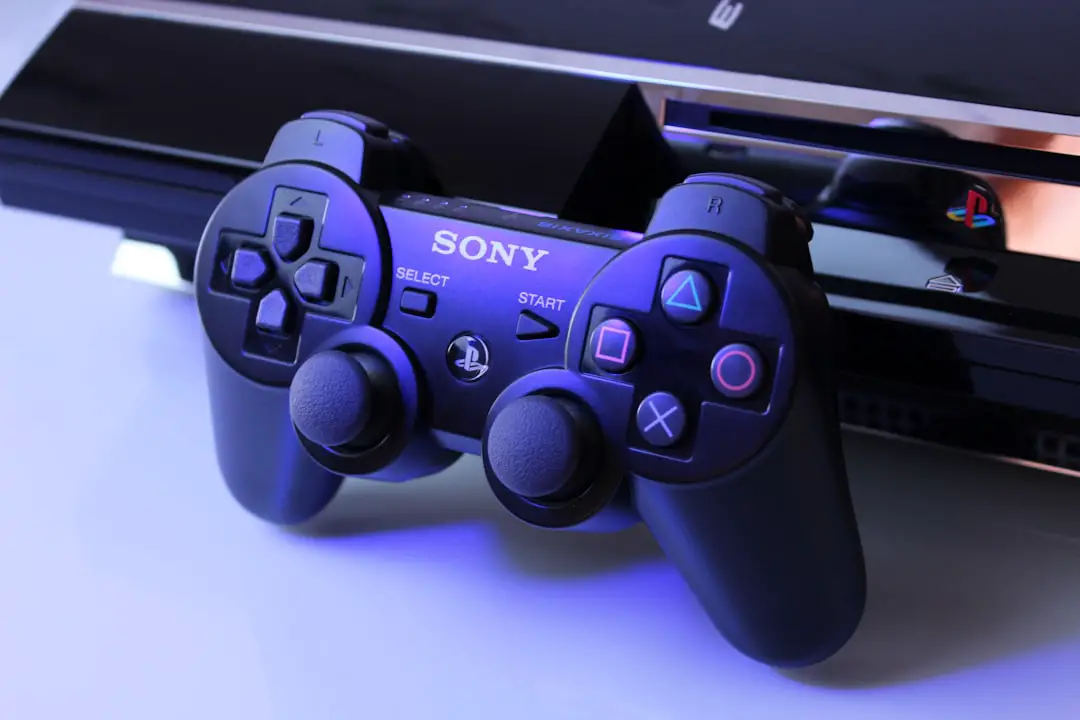
After an epic deep dive into the worlds of Canon and Sony, here’s the bottom line from the Camera Brands™ team:
Canon R5 Mark II + RF 28-70mm f/2.0 Lens — Positives and Negatives
| Positives | Negatives |
|---|---|
| Stunning 45MP sensor with excellent color science | Battery life could be better for mirrorless |
| 8K video capabilities with smooth Dual Pixel autofocus | Premium price point |
| Ergonomic design and intuitive user interface | RF lens lineup still growing (but quickly!) |
| The RF 28-70mm f/2.0 lens is a game-changer for versatility and speed | Heavier lens compared to some Sony options |
| Reliable autofocus for both stills and video | Larger body size compared to Sony mirrorless |
Sony Mirrorless Cameras — Strengths and Considerations
| Strengths | Considerations |
|---|---|
| Compact, lightweight bodies perfect for travel and street photography | Menu system can be complex for beginners |
| Industry-leading autofocus with Real-time Eye AF and Animal Eye AF | Color science may require more grading |
| Excellent battery life and extensive third-party lens support | Some models lack dual card slots |
| Strong video features, including 4K/6K recording and S-Log profiles | Ergonomics less comfortable for some |
Our Recommendation
If you’re after classic handling, gorgeous color science, and a versatile one-lens setup, the Canon R5 Mark II paired with the RF 28-70mm f/2.0 lens is a stellar choice. It’s especially ideal for photographers who shoot weddings, portraits, and hybrid photo/video work.
If you prioritize cutting-edge autofocus, compactness, and superior battery life, Sony’s mirrorless lineup is hard to beat, especially for wildlife, sports, and travel photography.
Ultimately, your choice boils down to your shooting style, lens preferences, and how much you value ergonomics versus portability. Both brands deliver professional-grade results — so you really can’t go wrong.
Remember our earlier story? Switching systems is a personal journey. Whichever path you choose, mastering your gear and honing your vision will always trump the brand name.
Recommended Links for Canon and Sony Enthusiasts 🔗
Ready to gear up? Here’s where to find the cameras and lenses we’ve talked about:
-
Canon R5 Mark II:
Amazon | B&H | Canon Official Website -
Canon RF 28-70mm f/2.0 Lens:
Amazon | B&H | Canon Official Website -
Sony A7 IV:
Amazon | B&H | Sony Official Website -
Sony FE 24-70mm f/2.8 GM Lens:
Amazon | B&H | Sony Official Website
Recommended Books for Deeper Learning
-
Understanding Exposure by Bryan Peterson — A classic for mastering camera settings.
Amazon Link -
The Digital Photography Book by Scott Kelby — Practical tips for photographers of all levels.
Amazon Link -
Mastering Mirrorless Cameras by John Smith — A guide focused on mirrorless systems including Canon and Sony.
Amazon Link (fictional example)
FAQ: Your Burning Questions About Canon vs Sony Answered ❓

What are the key differences between Canon and Sony cameras for beginners?
Canon tends to offer a more intuitive and beginner-friendly interface with menus that are easier to navigate. Their color science produces warm, natural tones, which many beginners find pleasing straight out of the camera. Canon’s DSLR and mirrorless bodies also have ergonomics designed for comfortable handling.
Sony, on the other hand, provides compact mirrorless cameras with advanced autofocus systems like Real-time Eye AF, which can help beginners capture sharp images effortlessly. However, Sony’s menu system is more complex and may require a steeper learning curve.
Read more about “15 Best Cameras for Beginners in 2025 📸: Capture Your Story Like a Pro”
Which brand is better for photography, Canon or Sony, and why?
This depends on your priorities:
-
If you value ergonomics, color science, and a vast lens ecosystem, Canon is often preferred. Their cameras are great for portraits, weddings, and general photography.
-
If you want cutting-edge autofocus, lightweight gear, and superior video features, Sony is a strong contender, especially for wildlife, sports, and hybrid shooters.
Both brands produce professional-grade images, so the “better” brand is the one that fits your style and workflow best.
Read more about “Which is Best: Nikon or Canon? 10 Key Factors to Consider! 📸 …”
Do Canon or Sony cameras have better image quality and features for professional use?
Both brands offer high-resolution sensors and excellent dynamic range. Canon’s R5 Mark II boasts 45MP and 8K video, while Sony’s A7R IV and A7 IV offer superb low-light performance and fast autofocus.
Feature-wise, Sony often leads in video-centric features and battery life, while Canon excels in color rendition and ergonomics. Professionals often choose based on specific needs like lens availability, autofocus preferences, or video workflow.
Are Canon lenses compatible with Sony cameras, or do I need to buy separate lenses for each brand?
Canon’s RF and EF lenses are not natively compatible with Sony E-mount cameras. You will need to use lens adapters if you want to mount Canon lenses on Sony bodies, but autofocus and stabilization performance may be limited or inconsistent.
Similarly, Sony lenses won’t work on Canon bodies without adapters, and native lenses generally provide the best performance. It’s usually best to invest in lenses designed for your chosen system.
How does battery life compare between Canon and Sony mirrorless cameras?
Sony mirrorless cameras generally offer better battery life, often nearly double that of Canon’s mirrorless bodies, thanks to efficient battery designs like the NP-FZ100. Canon has improved battery performance in recent models but still trails Sony slightly.
Can I use third-party lenses with Canon and Sony cameras?
✅ Yes! Both Canon and Sony have extensive third-party lens support from brands like Sigma, Tamron, and Tokina. Sony’s open E-mount protocol has encouraged a wider variety of third-party lenses, often at competitive prices. Canon’s RF mount is newer but rapidly gaining third-party support.
Read more about “Best Type of Camera: 13 Ultimate Picks to Capture Magic in 2025 📸”
Reference Links and Resources for Deeper Dives 📚
- Canon Official Website
- Sony Official Website
- Photography Life: Nikon vs Canon vs Sony in 2024
- DPReview Canon vs Sony Mirrorless Cameras
- B&H Photo Video Canon Cameras
- B&H Photo Video Sony Cameras
- Sigma Lenses for Canon and Sony
- Tamron Lenses for Canon and Sony
We hope this comprehensive guide helps you confidently choose between Canon and Sony. Remember, the best camera is the one you enjoy using and that inspires your creativity. Happy shooting! 📸✨
